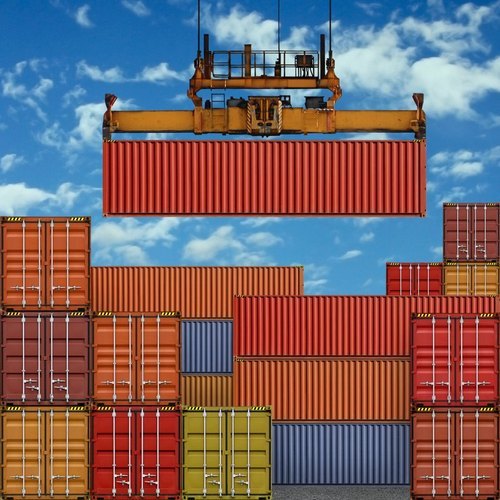- By TOP CHINA FREIGHT
- September 15, 2025
- Shipping
Table of Contents
In today’s global trade, freight consolidation China has become a vital solution for businesses importing goods from multiple suppliers. Instead of shipping partial loads separately, consolidation combines smaller shipments into one container, cutting costs and simplifying logistics. Many companies struggle with high shipping expenses, customs delays, and inefficiencies in supply chain management. With freight consolidation, these challenges can be addressed effectively while ensuring faster, more reliable delivery schedules.

What is freight consolidation from China?
Freight consolidation refers to the process of combining several small shipments from different suppliers into one full container before exporting them. This method is particularly valuable for businesses sourcing diverse products from multiple Chinese factories.
Instead of paying high rates for Less than Container Load (LCL) shipments, consolidation allows companies to enjoy the lower per-unit costs of Full Container Load (FCL) shipping. Moreover, it reduces handling risks, minimizes customs delays, and simplifies documentation since one master Bill of Lading covers the consolidated load.
Why is freight consolidation important for importers?
Shared container space lowers overall freight charges.
Fewer handling points reduce cargo damage.
Consolidated documentation speeds up clearance.
Consolidated shipments often follow fixed departure times.
How does freight consolidation reduce shipping costs?

Freight costs are a major concern in international trade. By consolidating cargo, businesses can significantly cut expenses.
Table: Cost Comparison – LCL vs Consolidation into FCL
| Shipment Type | Avg. Cost (USD) | Volume | Notes |
|---|---|---|---|
| LCL (5 CBM) | $350–$450 | Small | Priced per cubic meter |
| LCL (10 CBM) | $700–$900 | Medium | Costs add up quickly |
| Consolidated FCL (20ft) | $1,500–$2,200 | Larger | Lower cost per unit |
As seen, once shipments exceed around 8–10 cubic meters, consolidating into an FCL shipment is more economical than multiple LCL bookings.
What are the main steps in freight consolidation?
The consolidation process involves careful planning and coordination:
1.Cargo collection:
Forwarders gather goods from multiple suppliers across China.
2.Warehouse sorting:
Shipments are stored, checked, and packaged securely.
3.Container loading:
Goods are consolidated into one FCL container.
4.Customs documentation:
A master Bill of Lading and other documents are prepared.
5.Export and delivery:
Cargo is shipped and delivered to the final destination.
By outsourcing these steps to a reliable freight forwarder, businesses save time and reduce the risk of logistical errors.
Which industries benefit most from freight consolidation China?
Multiple small components from different factories.
Seasonal orders from different garment suppliers.
Lightweight but bulky products.
Importing varied products in small batches.
What are the advantages and disadvantages of freight consolidation?
| Advantages | Disadvantages |
|---|---|
| Lower shipping costs | Requires more planning |
| Simplified customs process | Possible delays in consolidation |
| Reduced cargo damage risk | Less flexibility for urgent orders |
| Access to FCL shipping benefits | Coordination with multiple suppliers |
How does freight consolidation impact transit times?
While consolidation requires some initial coordination time, the overall impact on transit is usually minimal.
| Route | Average Transit Time | Notes |
|---|---|---|
| China – USA (West) | 15–20 days | Additional 2–3 days for consolidation |
| China – Europe | 25–30 days | Minor delays possible |
| China – India | 12–18 days | Very efficient |
| China – Australia | 10–15 days | Consolidation adds minimal delay |
Therefore, when planned properly, consolidation hardly affects the end-to-end supply chain timeline.
What documents are required for consolidated freight shipments?

Consolidation simplifies documentation because multiple shipments are merged into one set of papers. Typical requirements include:
| Document | Purpose |
|---|---|
| Master Bill of Lading | Covers consolidated shipment |
| Commercial Invoice | Declares cargo value |
| Packing List | Details shipment contents |
| Certificate of Origin | Determines tariff rates |
| Customs Declaration | Filed with importing country |
Case Study: E-commerce Seller Using Consolidation

A mid-sized online retailer sourced products from five different factories in Guangzhou and Shenzhen. Initially, they shipped each order separately as LCL cargo, leading to high freight charges and delayed deliveries.
By switching to freight consolidation China, the company reduced shipping costs by 35%, improved customs clearance efficiency, and achieved more reliable delivery times. This allowed them to expand their product range without increasing logistics expenses.
How to select the right freight forwarder for consolidation?
When choosing a freight forwarder for consolidation, importers should evaluate:
- Experience in handling multi-supplier shipments
- Network of warehouses in major Chinese hubs
- Transparent pricing policies
- Customs clearance expertise
- Cargo tracking systems
The right partner ensures a seamless consolidation process, from supplier pickup to final delivery.
Practical tips for successful freight consolidation
- Plan shipments in advance to allow time for cargo gathering.
- Communicate with suppliers to align delivery schedules.
- Use efficient packaging to reduce space usage.
- Track shipments in real-time for better visibility.
- Work with experienced forwarders to handle paperwork and compliance.
By implementing these strategies, businesses can maximize the advantages of consolidation while minimizing risks.
Conclusion
Freight consolidation China is a powerful logistics strategy that lowers costs, simplifies customs, and makes supply chains more efficient. While it requires careful planning and coordination, the benefits far outweigh the drawbacks. Businesses of all sizes can leverage consolidation to remain competitive in global trade.
Need a Shipping Quote?
If you want expert guidance and peace of mind, our team is ready to assist.
TJ China Freight offers tailored solutions to help businesses of all sizes ship more reliably from China.

FAQ
Q1:How does freight consolidation improve customs clearance?
It reduces paperwork by creating one master Bill of Lading and consolidated documents, which makes customs clearance faster and lowers the chance of delays.
Q2:Can fragile or high-value goods be consolidated safely?
Yes. With proper packaging, insurance, and professional handling, fragile and high-value goods can be securely consolidated and shipped without damage.
Q3:Do I need to coordinate with all suppliers myself?
Not necessarily. Freight forwarders usually handle supplier coordination, pickup, and consolidation, allowing importers to focus on business operations.
Q4:How much time does consolidation add to shipping schedules?
Typically, consolidation adds 2–4 days for collection and warehouse processing. However, with proper planning, overall delivery times remain efficient.
Q5:Can consolidation be used for both sea and air freight?
Yes. While most common in sea freight, consolidation is also available for air shipments, especially when small parcels need faster delivery.
